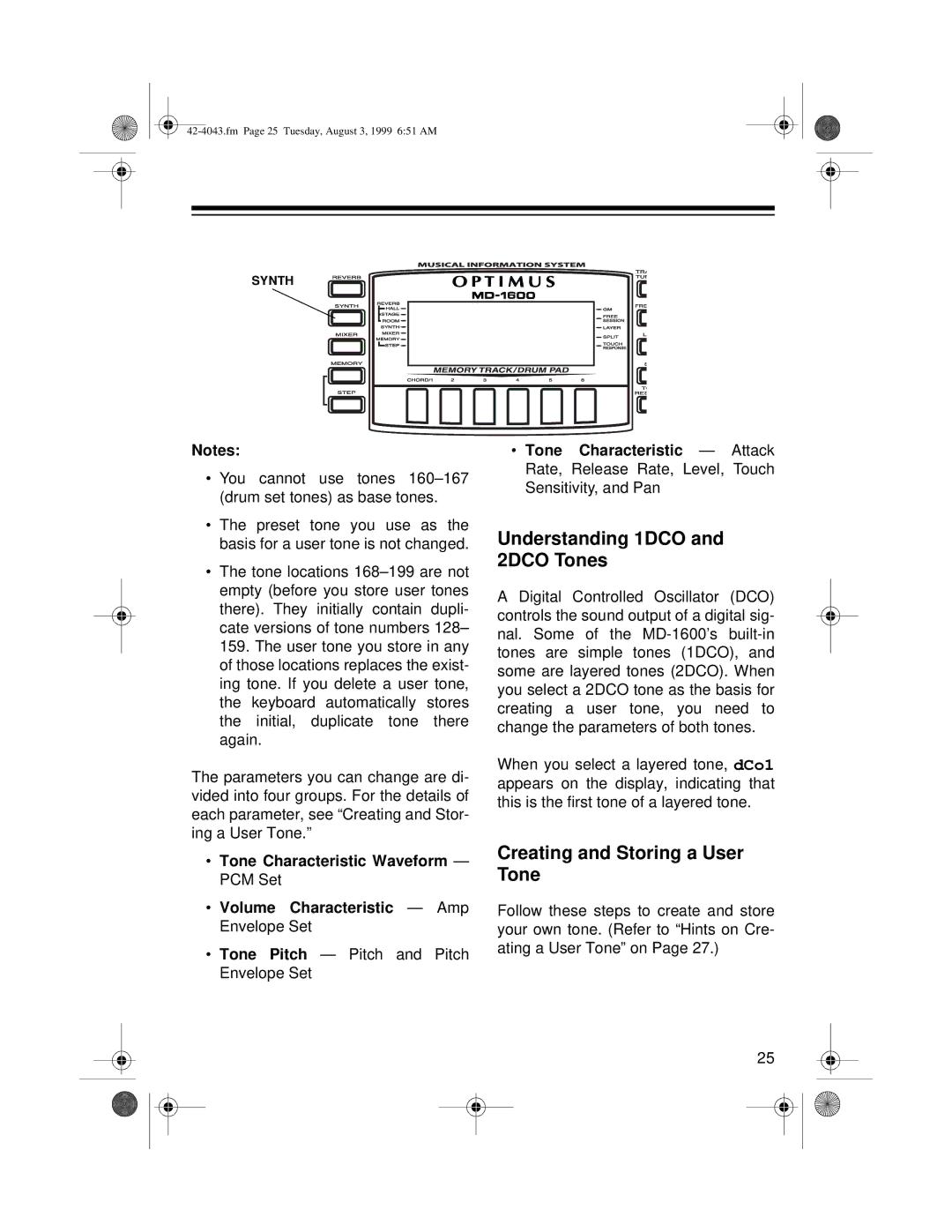
SYNTH
Notes:
•You cannot use tones
•The preset tone you use as the basis for a user tone is not changed.
•The tone locations
The parameters you can change are di- vided into four groups. For the details of each parameter, see “Creating and Stor- ing a User Tone.”
•Tone Characteristic Waveform — PCM Set
•Volume Characteristic — Amp Envelope Set
•Tone Pitch — Pitch and Pitch Envelope Set
•Tone Characteristic — Attack Rate, Release Rate, Level, Touch Sensitivity, and Pan
Understanding 1DCO and 2DCO Tones
A Digital Controlled Oscillator (DCO) controls the sound output of a digital sig- nal. Some of the
When you select a layered tone, dCo1 appears on the display, indicating that this is the first tone of a layered tone.
Creating and Storing a User Tone
Follow these steps to create and store your own tone. (Refer to “Hints on Cre- ating a User Tone” on Page 27.)
25
